
John Butler Yeats RHA was an Irish artist. Born into a family of impoverished Anglo-Irish landholders, his father was the painter John Butler Yeats, and his brother was the poet W. B. Yeats. Jack B. was born in London but was raised in County Sligo with his maternal grandparents, before returning to London in 1887 to live with his parents. Afterwards he travelled frequently between the two countries; while in Ireland he lived mainly in Greystones, County Wicklow and in Dublin city.

William Butler Yeats was an Irish poet, dramatist and writer, and one of the foremost figures of 20th-century literature. He was a driving force behind the Irish Literary Revival, and along with Lady Gregory founded the Abbey Theatre, serving as its chief during its early years. He was awarded the 1923 Nobel Prize in Literature, and later served two terms as a Senator of the Irish Free State.

The Abbey Theatre, also known as the National Theatre of Ireland, in Dublin, Ireland, is one of the country's leading cultural institutions. First opening to the public on 27 December 1904, and moved from its original building after a fire in 1951, it has remained active to the present day. The Abbey was the first state-subsidized theatre in the English-speaking world; from 1925 onwards it received an annual subsidy from the Irish Free State. Since July 1966, the Abbey has been located at 26 Lower Abbey Street, Dublin 1.
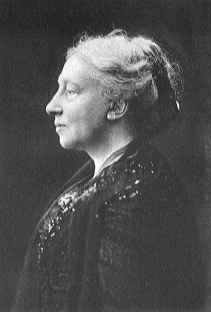
Isabella Augusta, Lady Gregory was an Anglo-Irish dramatist, folklorist and theatre manager. With William Butler Yeats and Edward Martyn, she co-founded the Irish Literary Theatre and the Abbey Theatre, and wrote numerous short works for both companies. Lady Gregory produced a number of books of retellings of stories taken from Irish mythology. Born into a class that identified closely with British rule, she turned against it. Her conversion to cultural nationalism, as evidenced by her writings, was emblematic of many of the political struggles that occurred in Ireland during her lifetime.
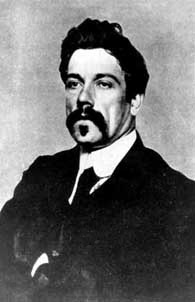
Edmund John Millington Synge was an Irish playwright, poet, writer, collector of folklore, and a key figure in the Irish Literary Revival. His best-known play The Playboy of the Western World was poorly received, due to its bleak ending, depiction of Irish peasants, and idealisation of patricide, leading to hostile audience reactions and riots in Dublin during its opening run at the Abbey Theatre, which he had co-founded with W. B. Yeats and Lady Gregory. His other major works include In the Shadow of the Glen (1903), Riders to the Sea (1904), The Well of the Saints (1905), and The Tinker's Wedding (1909).
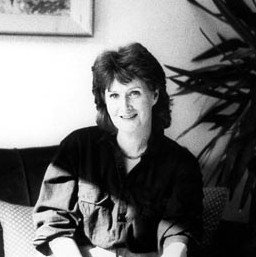
Eavan Aisling Boland was an Irish poet, author, and professor. She was a professor at Stanford University, where she had taught from 1996. Her work deals with the Irish national identity, and the role of women in Irish history. A number of poems from Boland's poetry career are studied by Irish students who take the Leaving Certificate. She was a recipient of the Lannan Literary Award for Poetry.
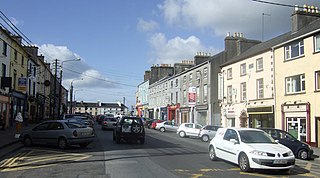
Gort is a town of around 2,800 inhabitants in County Galway in the west of Ireland. Located near the border with County Clare, the town lies between the Burren and the Slieve Aughty and is served by the R458 and R460 regional roads, which connect to the M18 motorway.
The Irish Literary Revival was a flowering of Irish literary talent in the late 19th and early 20th century. It includes works of poetry, music, art, and literature.

Padraic Colum was an Irish poet, novelist, dramatist, biographer, playwright, children's author and collector of folklore. He was one of the leading figures of the Irish Literary Revival.
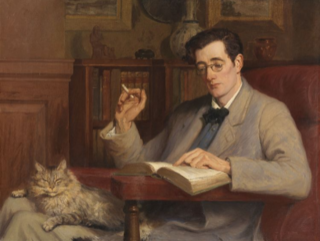
Esmé Stuart Lennox Robinson was an Irish dramatist, poet and theatre producer and director who was involved with the Abbey Theatre.
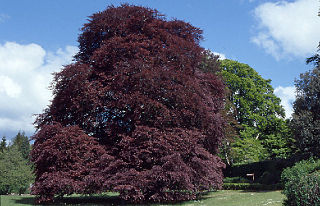
Coole Park is a nature reserve of approximately 1,000 acres (4 km2) located a few miles west of Gort, County Galway, Ireland. It is managed by the Irish National Parks & Wildlife Service, part of the Department of Arts, Heritage and the Gaeltacht. The park is in a low–lying karstic limestone area characterised by seasonal lakes, known as turloughs, which are almost unique to Ireland. It has extensive woodlands. There are 6 kilometres of signposted nature trails plus a formal late 18th century walled garden.
Declan Kiberd is an Irish writer and scholar with an interest in modern Irish literature, both in the English and Irish languages, which he often approaches through the lens of postcolonial theory. He is also interested in the academic study of children's literature. He serves on the advisory board of the International Review of Irish Culture and is a professor at the University of Notre Dame and at its campus in Dublin. In recent years and with publications such as After Ireland (2018), Kiberd has become a commentator on contemporary Irish social and political issues, particularly as such issues have been examined by Ireland's writers.

Thoor Ballylee Castle is a fortified, 15th-century Anglo-Norman tower house built by the septs de Burgo, or Burke, near the town of Gort in County Galway, Ireland. It is also known as Yeats's Tower because it was once owned and inhabited by the poet William Butler Yeats.
Phil Young is a native of Dunmanway in west Cork and now lives in Dublin. She graduated from Trinity College, Dublin, with an MPhil in Anglo-Irish literature, has had a number of short stories and articles published in various magazines and has featured on the RTÉ radio programme 'Sunday Miscellany'.
Thomas Augustine "Gus" Martin was an Irish academic, Anglo-Irish scholar, teacher, writer, politician, broadcaster and literary critic. During his career he was professor of Anglo-Irish Literature at University College Dublin (UCD), chairman of the board of the Abbey Theatre, and a member of Seanad Éireann from 1973 to 1981.
Damien Kiberd is an Irish journalist and commentator. He is one of the four founders of, and was formerly editor of, The Sunday Business Post. He is also a former business editor of The Irish Press, and of the Sunday Tribune. Kiberd has also worked more recently as a presenter of news-discussion programmes on Newstalk and 4fm. Kiberd was a supporter of the republican lobby group, the Irish National Congress in the 1990s. He is patron of The Ireland Institute at the Pearse Centre in the former home of Patrick and Willie Pearse in Pearse Street.
Cuchulain of Muirthemne is a version of the Cú Chulainn legends based on previous oral and written versions, as collected and translated by Lady Augusta Gregory. First published in 1902, it is one of the earliest such collections to appear in English. The book covers the lifespan of the hero, from conception to death, and draws on folklore and oral tradition in addition to the stories of the Ulster Cycle.
Alexander Norman "Derry" Jeffares AM was an Irish literary scholar.
Edna Longley, is an Irish literary critic and cultural commentator specialising in modern Irish and British poetry.

The Rt Hon. Sheila Wingfield, Viscountess Powerscourt, was an Anglo-Irish poet.












